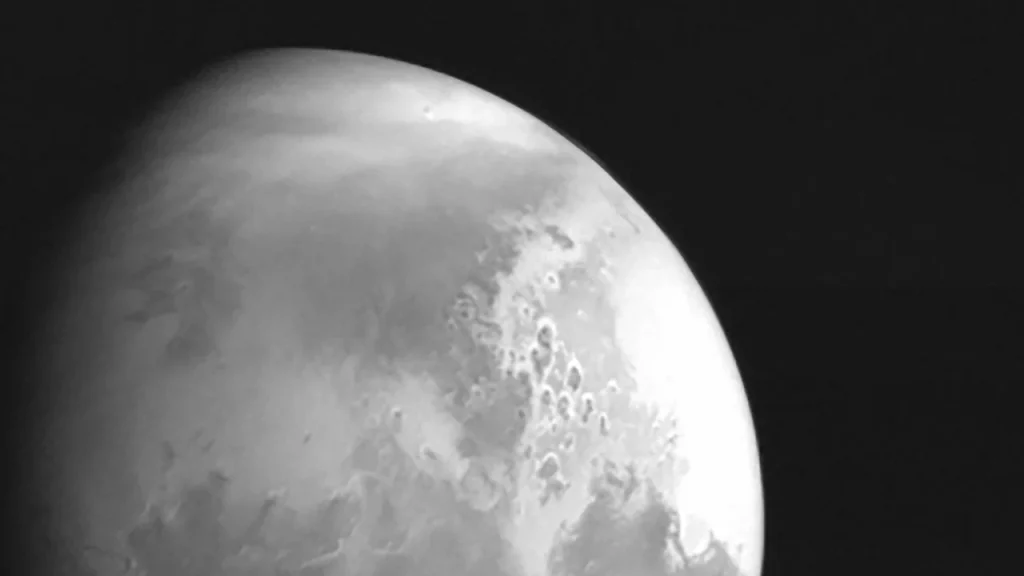China’s ambitious Tianwen-1 mission has achieved a milestone by beaming back its first photograph of Mars, offering a glimpse of the red planet’s rugged terrain. Captured by the China National Space Administration (CNSA) at a distance of 2.2 million kilometers, the black-and-white image showcases prominent geological features, including the Schiaparelli crater and the vast Valles Marineris canyon system, which stretches over 4,000 kilometers along Mars’ equator. “This image marks a significant step in our exploration of Mars,” a CNSA spokesperson noted, as the probe prepares to enter Martian orbit in early February 2021.
Tianwen-1’s Multifaceted Mission
The Tianwen-1 spacecraft, comprising an orbiter, lander, and rover, is set to make history as China’s first independent Mars mission. The rover is slated to land in Utopia Planitia, Mars’ largest impact basin, later in 2021, where it will search for signs of past life and study the planet’s surface. Launched in July 2020, the mission aims to answer one of science’s most profound questions: Did Mars ever harbor life? The probe’s arrival aligns with a rare window when Earth and Mars are closest, a strategic timing shared by rival missions from the United States and the United Arab Emirates.
A Global Race to Mars
Tianwen-1 is one of three missions launched in July 2020, alongside NASA’s Perseverance rover and the UAE’s Hope orbiter, all vying to unlock Mars’ secrets. Recent robotic explorations have revealed dried river channels and lake beds, suggesting the planet, now a cold desert, may have once supported life. “Mars remains our best bet for finding evidence of extraterrestrial life,” an astrobiologist remarked, highlighting the planet’s scientific allure despite the high costs of exploration. The trio of missions underscores a global push to understand Mars’ history and potential habitability.
Geological Wonders in Focus
The Tianwen-1 image captures the Schiaparelli crater, a 460-kilometer-wide feature, and the Valles Marineris, often called the “Grand Canyon of Mars” for its immense scale. These formations offer clues to Mars’ geological past, from ancient impacts to tectonic activity. The CNSA’s success in capturing this image demonstrates China’s growing prowess in space exploration, building on its lunar missions and positioning it as a key player in interplanetary research.
Looking Ahead
As Tianwen-1 prepares for orbit insertion, anticipation builds for its rover’s surface exploration. The mission’s data could reshape our understanding of Mars, complementing findings from NASA and UAE probes. With all three missions converging on the red planet, 2021 promises to be a pivotal year for uncovering whether Mars once hosted life, bringing humanity closer to answering a cosmic question.






